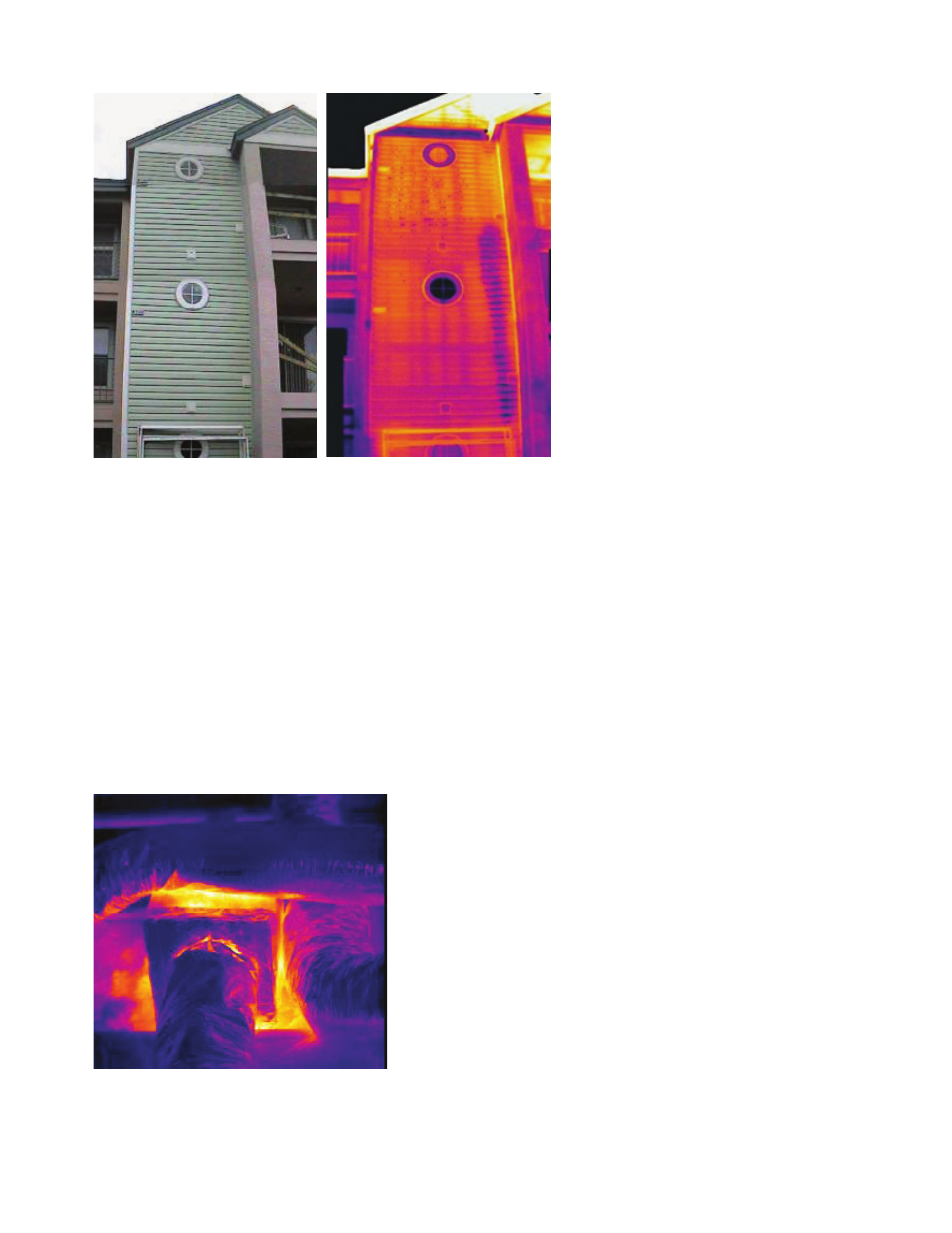Retrotec USACE User Manual
Page 353

Appendix G G23
the height of the building). In this case, at the joint of the ceiling and the outer
wall, there is, in normal conditions, a positive pressure drop, and warm indoor
air leaks out from the holes of the air barrier. In cool climates, air-transported
moisture can condense on the cooler structures.
Buildings with mechanical ventilation should have an airtight envelope and
a balanced ventilation system (thus having a slight negative pressure drop).
Uncontrolled air leaks increase the feeling of draft, especially if the leakage
spots are highly localized or close to the fl oor level. If the uncontrolled venti-
lation grows up to a high level, it might cause abnormal energy consumption
(Figure G24). In vented attics with HVAC ducting in the attic, a large loss
through the ducting’s insulation, as well as air leaking at joints, is lost to the
exterior of the building.
Figure G24. IR thermography showing a leak
from HVAC ducting. (Images from Infrared
Training Center.)
In the buildings made of prefabricated concrete elements, the anchors
could be localized; in some cases, the insulation quality variations, such as
Figure G23. IR thermography of a vinyl-sided three-story apartment, showing cool patterning of
a third-fl oor washing machine leak. (Images from Infrared Training Center.)
